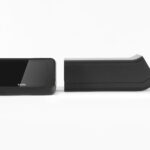Whether it is for testing new mix designs or testing for quality and reliability post production, the compressive strength and tensile strength are the most important mechanical tests executed on cementitious products.
Tensile strength tests can be carried out to gain an understanding of the cohesion between the cement particles. Additionally, the tensile strength is an important property as concrete structures are vulnerable to tensile cracking due to a variety of effects including dynamic loading and temperature variation. It has been estimated that tensile strength of concrete equals roughly about 10% of compressive strength. To determine the tensile strength, indirect methods are applied due to the difficulty of the direct method.
Next to indirect methods such as split cylinder test and the flexure test, the Impulse Excitation Technique by GrindoSonic acts as a fast, simple and accurate method for determining the Young’s modulus (Static and Dynamic E-modulus), Shear modulus (G-modulus), Poisson’s ratio and the Speed of Sound.
The GrindoSonic MK7 system measures the resonant frequencies of materials – these are physical properties – and simultaneously calculates the mechanico elastic properties as described in the standards ASTM E 1876 and BS 1881-209.
Once the correlation with the breaking strength has been established, you will save lots of time using a simple set-up that gives you reliable measurements based on physics.
Equally important to the strength of the materials, is the quantification of the durability and in-use performance of new mix designs . In this respect, freeze-thaw resistance and crack detection are highlighted.
Resistance to freeze-thaw cycles is of major importance and is thus one of the major criteria in testing. The GrindoSonic MK7 system provides a non-destructive method for quantifying evolutions of your material such as freeze-thaw cycles. All methods (CIF-test, Slab-test and Beam test) are described in the European standard CEN/TR 15177:2006 and can be performed using the GrindoSonic MK7. In North America, the most commonly used testing standard for freeze-thaw resistance is the ASTM C666/C666M-15.
Micro-cracking refers to very small cracks that form in concrete but are not visible to the naked eye. Some microcracking occurs as a natural part of the cement hydration process, but it also occurs as compressive loads are applied. Bond cracks form where the coarse aggregate and the cement meet. When cracks are present in a material, they act as centres where higher-frequency vibrations are absorbed. With the GrindoSonic MK7 system, the bending and torsional resonant frequencies on the product can be measured together with their individual damping values. The damping values are directly related to the presence of cracks and will allow you to distinguish cracked products from the intact ones.



